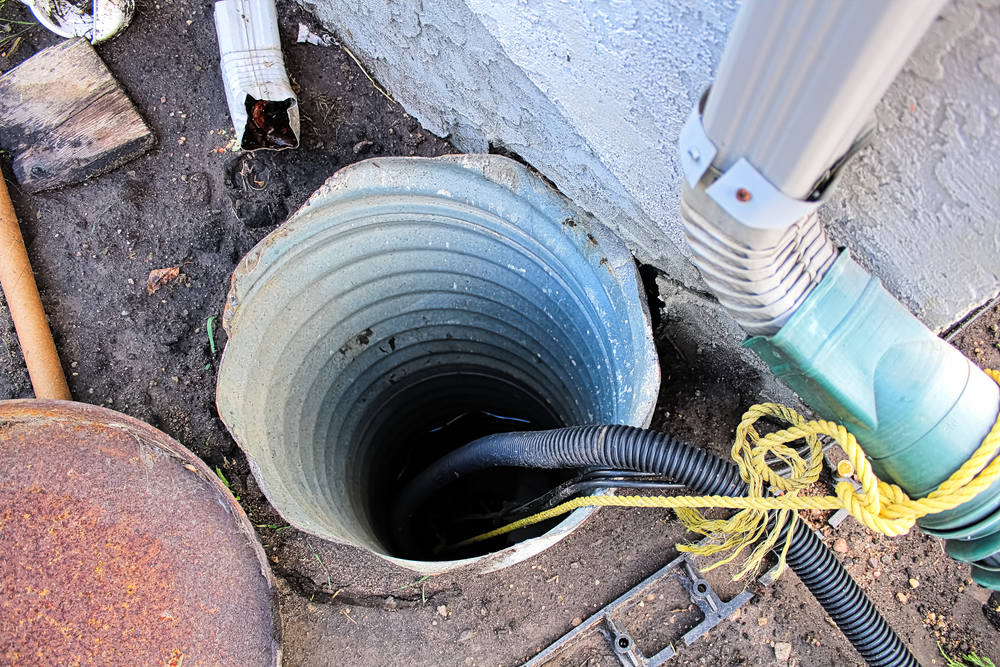Sump Pump Sizing & Installation
Have you recently experienced basement flooding due to a sump pump failure? Considering the advantages of a sump pump system with a battery backup? Are you trying to find a home plumber with experience installing and repairing sump pumps? Do you want to divert the drainage from your sump pump system away from your house?
Established in Grove, Oklahoma, and serving the neighboring communities, Meridian Home Services is a veteran-owned plumbing company that provides dependable home sump pump installations, repairs, and upgrades. Our staff has the practical knowledge and technical know-how to finish size calculations, install sump basins and pumps accurately, and integrate battery backup systems correctly. Reach out to our solutions adviser right now if you’re searching for a full-service plumbing company that can provide turnkey sump pump installations, upgrades, or foundation water management services.
Meridian Home Services Delivers Safe Sump Pump Installations and Replacements:
- Subsoil drainage pipe installation and replacement
- Sump pump check valve installation and replacement
- Sump pump discharge piping installation and replacement
- Sump pump high water alarm installation
- Battery backup sump pump installation and upgrade
- Sump pump installation and replacement
- Sump pump sizing calculations
- Radon-rated basin and lid installation and upgrades
- Sump basin installation and replacement
- Sump basin sizing calculations
Key Benefits of Sump Pump Protection:
- Lower the humidity levels and enhance the quality of air within.
- Prevent water-related problems, including electrical damage, wood rot, and even fire threats.
- Avoid costly flood damage cleanup, restoration, and maintenance.
- Prevent the formation of mold and mildew resulting from flooding.
- Keep crawlspaces and basements safe from devastating floods

Plumbing Sump Pumps – Did You Know
Water is one of the main factors that cause damage to dwellings, accounting for 40% of all construction issues, according to the Journal of the American Institute of Architects. The Insurance Information Institute (III) reports that 98% of basements will eventually suffer some water damage incident. The Federal Emergency Management Agency (FEMA) of the United States conducted an extensive study and found that 90% of all natural disasters include some level of flooding and that even a single inch of floodwater may result in losses of up to $25,000. The Catastrophic Loss Reduction Institute has discovered a disturbing pattern. Since the 1950s, catastrophe damage has been found by the (ICLR) to double every five to ten years.
Installing a sump pump and basin that are the right size helps reduce the danger of mold growth and catastrophic basement flooding. Minimum requirements for the design, materials, construction, and installation of sump pump systems in residential dwellings are found in the International Plumbing Code (IPC), section 1113.1, and International Residential Code (IRC), part P3303. Extensive research and empirical monitoring of current systems have improved our understanding of systems and produced industry best practices that surpass code minimums. According to a study by the Water Environment Federation (WEF), deeper sump pits are more effective in minimizing subterranean water penetration and averting overflows and floods. Although sump basins must be at least twenty-four inches deep according to regulation, WEF monitoring revealed that deeper basins—thirty inches or more—provide much superior flood protection.
The safe removal of water and hydrostatic pressure from under and around a home’s foundation is the aim of a sump pump and basin. For sump pump systems to operate dependably over the long term, proper sizing is essential. Codes provide the minimum size for sump basins, and pump manufacturers produce performance curves for different pumps. It is important for plumbers to accurately design pumps by using the computed needed capacity, expressed in gallons per minute (GPM), and the total dynamic head, expressed in feet (TDH). Short-cycling and early pump failure are caused by inadequately sized sump pumps or, worse, by the absence of a basin entirely. Additionally, oversized main pumps will short-cycle and need more power to run, increasing the cost of replacement and electricity bills.
Power interruptions pose the biggest risk to a sump pump system that is properly designed for safe, continuous operation. Electric motors and pumps are powered by electricity in sump pumps. Large rain or storm events often result in utility power outages due to fallen trees or storm damage, making your house susceptible to flooding. The issue of power outages is resolved with battery backup equipment, which has a secondary pump connected to a battery bank and controller. When the controller detects a lack of utility power, power is taken from the backup batteries to run the backup sump pump until the main utility energy is restored.
The placement of the sump pump discharge pipe adjacent to the foundation wall is the most frequent installation error that has been noticed. Due to the expelled water flowing down the foundation wall and seeping back into the basement, an excessive amount of hydrostatic pressure is created. To avoid water recycling through the sump basin, it is the industry’s best practice to route the discharge line away from the foundation. The most common methods for doing this include putting in an ice guard where the discharge pipe leaves a basement and underground piping non-perforated sub-soil away from the house, ending with drainage rock at a daylit spot. Installing a new whole-home sump system with battery backup can cost as little as $2,500 or as much as $8,000, depending on the location of the discharge pipe, the depth of the basement floor excavation, the integration of any subsurface foundation drains, and any underground excavation and piping required removing water from the foundation.
